Taxpayers for Common Sense is out with a new report, “Clearing the Smoke: A Closer Look at Federal Spending and Programs on Wildfire.” Host Steve Ellis is joined by TCS Vice President Autumn Hanna, TCS Researcher Tyler Work, and Policy Analyst Mia Huang to navigate the thicket of federal programs and spending.
Episode 43: Transcript
Announcer:
Welcome to Budget Watchdog All Federal. The podcast dedicated to making sense of the budget, spending, and tax issues facing the nation. Cut through the partisan rhetoric and talking points for the facts about what’s being talked about, bandied about, and pushed in Washington. Brought to you by Taxpayers for Common Sense. And now, the host of Budget Watchdog AF, TCS President, Steve Ellis.
Steve Ellis:
Welcome to All American Taxpayers Seeking Common Sense. You’ve made it to the right place. For over 25 years, TCS, that’s Taxpayers for Common Sense, has served as an independent nonpartisan budget watchdog group based in Washington, DC. We believe in fiscal policy for America that is based on facts. We believe in transparency and accountability because no matter where you are on the political spectrum, no one wants to see their tax dollars wasted. Today, we’re going to take a closer look at federal spending in programs on wildfire. TCS is out with a new report called Clearing the Smoke that provides historical perspectives on how federal wildfire mitigation policy and spending got to where they are today. Plus, what government leaders should be considering in order to improve landscape, community and fiscal resilience in the face of wildfire. Joining us now to navigate that thicket of federal programs in spending is TCS Vice President, Autumn Hanna, Policy Analyst, Mia Huang and Research Associate, Tyler Work. Welcome back to the podcast, Autumn, Mia and Tyler.
Autumn Hanna:
Hi, Steve.
Mia Huang:
Thanks, Steve.
Tyler Work:
Happy to be back.
Steve Ellis:
Okay. Autumn, let’s start with why the Taxpayers for Common Sense team authored this report?.
Autumn Hanna:
Well, Steve, wildfires in the US are increasing and hitting folks closer and closer to home. Everyone knows there’s a growing need for resources to address this problem, including members of Congress. So, a lot of money has recently been allocated for wildfire spending. Money that we want to see spent on efforts that will protect communities and reduce wildfire risks and costs over the long term. But looking at taxpayer spending on wildfires isn’t new for TCS. It’s back in the early two thousands, TCS released a report, From the Ashes: Reducing the Harmful Effects and Rising Costs of Western Wildfires. Back then, the federal government spent more than a billion dollars and more than 27,000 firefighters risked their lives battling blazes that charred more than 2.2 million acres of national forest, and additional 5 million acres of other public and private lands.
Steve Ellis:
I remember, From the Ashes. It wasn’t the early two thousands, it was the year 2000. December, but still 2000. That report was groundbreaking and still gets cited in news stories today.
Autumn Hanna:
That’s right, and that’s because many of the report’s recommendations still ring true. Minimize costs not fires, evaluate the success of fire prevention by measuring the number of high-risk communities protected instead of acres treated, encouraged state and local governments to set regulations that require homeowners that live near wildlands to protect their own private property through common sense fire safety practices, increase transparency and accountability just to name a few. And now, two decades later, we’re releasing, Clearing the Smoke, to help explain the many complicated layers of federal funding at various agencies spread across the federal government.
Steve Ellis:
Thanks, Autumn. The report includes a history of federal spending on wildfire and then dives into the current litany of spending across agencies involved. Mia, can you give us a quick rundown on what wildfire spending has looked like over the last century and how we can learn from it?
Mia Huang:
Well, Steve, basically ever since the Forest Service was first established in 1905, the agency had followed a very aggressive fire suppression policy. Largely influenced by the Great Fire of 1910, also known as the Big Burn or Big Blowup, which burned through 3 million acres and killed 85 people. The Forest Service formally established the “10 a.m. policy” in 1935. The reason it’s called the “10 a.m. policy” is that it called for thorough suppression of all fires and all locations by 10:00 AM on the day after fires are detected. During the same period, the Forest Service also openly opposed the practice of prescribed burning.
Steve Ellis:
Isn’t prescribed burning one of the critical tools for preventing wildfires, Mia?
Mia Huang:
That’s right, Steve. But it really wasn’t until the 1970s and ’80s that the Forest Service finally started to recognize the ecological role of wildfires which create habitats, revitalized vegetation, reduce fuels, and prevent high intensity wildfires. The Forest Service finally ended their “10 a.m. policy” in the late 1970s, but as From the Ashes noted, even as the Forest Service recognized, that many fires should be allowed to burn within limits., they continued to expend huge amounts of human and physical resources trying to extinguish almost all fires. But as fire suppression caused suppressed 1 billion and was rapidly approaching 2 billion by the early two thousands, it was obvious that our past fire policies were misguided. And around this time there was a shift in policy narrative and lawmakers as well as the timber industry started to emphasize that the buildup of fuel after our century of aggressive firefighting is causing bigger and costly wildfires. And this removal of hazardous fuels continue to be a really big focus of wildfire spending today.
Steve Ellis:
And I assume, Mia, that this history of aggressive fire suppression has had a big impact on wildfire spending, right?
Mia Huang:
Oh, definitely. On top of the “10 a.m. policy”, the Forest Service was also given what we call a blank cheque. Basically, ever since the Forest Service was tasked with managing of national forests and well wildfires, Congress also authorized the agency to use any available funds necessary for suppression in case of fire emergencies, which Congress would reimburse later. So, quite literally giving the Forest Service a blank cheque, a privilege not available to other federal agencies subject to regulation appropriations process. And as suppression costs climbed in the 1960s and 1970s, the OMB, the Office of Management of Budget raised some concerns over the return on fire suppression spending and Congress finally repealed the blank cheque law in 1978. But this was really short lived. Congress once again granted the Forest Service, the authority to transfer funds following the Yellowstone fire of 1988. And ever since then, the authority transfer funds for firefighting and related activities is granted to Forest Service and the Department of the Interior or DOI annually in appropriation bills.
Steve Ellis:
Yeah, one of those things that isn’t really permanent policy but just gets renewed each year in appropriations. We’ve certainly seen those in other areas. And I can imagine, Mia, that the ability to transfer any funds to suppress fire can be problematic. I mean, you’re just robbing prevention and mitigation Peter to pay suppression Paul, right?
Mia Huang:
Right. The authority transfer funds has led to the practice of what is often known as fire borrowing, which became a lot more controversial in early two thousands as wildfire spending really started to balloon. Fire borrowing is problematic for so many reasons. It drains Forest Service budgets, compromises other important recreational and forest management programs. It is disruptive to non-fire operation and creates uncertainty about the availability of funds and disrupts other time sensitive projects. The list just goes on. But most importantly, fire borrowing perpetuates are really vicious cycle in wildfire suppression spending. It diverts resources meant for wildfire prevention and risk motivation, which eventually leads to even steeper future suppression costs.
Steve Ellis:
Yeah, I can see how that would work. And that essentially you’re not doing the work to prevent future fires, and so while you’re fighting a fire in one place, you’re basically laying the groundwork or putting out the kindling for a fire somewhere else. So, in the report, Mia, we highlighted how Congress tried to fix the fire borrowing problem by creating a reserve fund. Could you explain that a little bit?
Mia Huang:
Of course. The Wildfire Suppression Operations Reserve Fund, a really long name. So, just Reserve Fund for short was passed along with the FY 2018 omnibus and is often also called the wildfire funding fix. So, here’s how it works. The Reserve Fund can only be accessed when wildfire suppression funding meets the required base level and the underlying appropriations bill. The base level is set and frozen at the wildfire suppression operations requested and the President’s 2015 budget. The Reserve Fund was first available in FY 2020 with an annual maximum of $2.25 billion, and this max increases by $100 million every fiscal year till fiscal year 2027. Any unallocated balances in the Reserve Fund carry forward to the next year and remain available for Forest Service and DOI to tap into.
Steve Ellis:
So, an off-budget Reserve Fund, and it’s based on 2015 levels. Well, I guess the real question to answer for our Budget Watchdog AF listeners is, did the wildfire funding fix fix wildfire spending?
Mia Huang:
Well, the problem is we don’t know for sure yet. The wildfire funding fix did not prohibit Forest Service transfer authority, nor did it address the perverse incentive to suppress fire at any cost just because you know there are funds available. And even if fire borrowing is still happening, we wouldn’t have no idea as that information is not readily available. And the problem is the lack of transparency. Even though the Forest Service and DOI is required to report to Congress on any funds used in a given fiscal year, some of these reports are not available. One other thing is that the funding fix was introduced in part to bypass the procedural and budgetary caps on discretionary spending and their BCA, the Budget Control Act of 2011. But now that BCA has expired, lawmakers should really assess the budgetary structure of the Reserve Fund.
Steve Ellis:
Aha, the BCA legacy lives on that ended basically just a couple years ago, and the BCA was brought to us in the midst of another debt limit fight like we’re in now. But I digress. Thanks for the history lesson, Mia. This is important since large infusions of taxpayer cash from the Infrastructure Investment and Jobs Act and the Inflation Reduction Act, approximately $7 billion and $5 billion, respectively, are wildfire-related investments. Tyler, what does the report cover in terms of this new spending, and are there metrics for success in these spending packages?
Tyler Work:
Well, first, Steve, I want to say that your $7 billion and $5 billion top lines don’t quite cover the full suite of wildfire spending included in these bills. As you know, the Infrastructure Investment and Jobs Act and the Inflation Reduction Act, were both massive pieces of legislation, but combined, included nearly a trillion dollars in new spending across the federal government. And a lot of this investment was directed towards addressing the impacts of climate change, much of which can fall under this massive umbrella we call wildfire related spending.
Steve Ellis:
Okay, Tyler. So, since I didn’t get it right, what would you say is a more accurate number for the funding in these pieces of legislation?
Tyler Work:
We’ve seen a couple of different estimates for these bills from different agencies, NGOs, and even the nonpartisan Congressional Research Service. They all seem to have their own final sum, which is understandable because there are a lot of factors involved in wildfire management ranging from forest health to building more resilient infrastructure. But since the goal of our report was to begin an investigation into the many federal programs and appropriations accounts that contribute to wildfire policy, we took a broad definition of wildfire-related spending. So, in this report we highlighted around $20 billion in funding from the Infrastructure Investment and Jobs Act and another $10 billion from the Inflation Reduction Act. But again, that covers a lot of different activities some of which are more directly related to wildfire than others.
Steve Ellis:
So, nobody’s going to accuse us of not being able to see the forest for the trees. So, all right. Can you give me a few examples, Tyler?
Tyler Work:
Of course. So, the $7 billion you mentioned earlier, Steve, $7.3 billion to be exact.
Steve Ellis:
What’s $300 million between friends? Come on.
Tyler Work:
Give or take. But that is a common number used because that’s the total appropriations for the US Forest Service and the Department of Interior in the IIJA. And that includes a lot of wide items that I think we would all agree count as wildfire spending like half a billion dollars to plan and conduct prescribed fires. But there’s also a chunk of money for ecosystem restoration like $200 million to establish a national re-vegetation effort. And while that might not immediately make you think of wildfire, how this re-vegetation plan is implemented could have a huge effect on how we manage federal lands and in turn manage wildfire risk on federal lands.
Steve Ellis:
Okay, I get it. So, what about wildfire funding related provisions outside of the Forest Service and DOI?
Tyler Work:
Oh, absolutely. There’s plenty of that. There’s new spending going to the Department of Energy and Department of Transportation to make infrastructure more resilient to climate change and natural disasters, which includes wildfires. There’s new money for wildfire research going to NOAA, which is the National Oceanic and Atmospheric Administration, and some of the EPAs $3 billion environmental and Climate Justice Block Grants will also be used to mitigate climate and health risks from wildfires. And that’s just a couple of examples. But I’m glad you brought this up because it’s important to note that there are a lot of different agencies involved in some way with Federal Wildfire Management,
Steve Ellis:
Which also complicates tracking all that spending and funding and also requires better inter-agency coordination. And to learn more about all the agencies involved, you can check out a whole section of our report dedicated to fact sheets about some of the federal agencies Tyler had just listed.
You’re listening to Budget Watchdog All Federal. The podcast dedicated to making sense of the budget, spending and tax issues facing the nation. I’m your host, Steve Ellis, and we continue now with TCS Vice President, Autumn Hanna, Policy Analyst, Mia Huang and Research Associate, Tyler Work. Okay, Tyler, before we move on, I want to talk about the second part of my original question. Are there metrics for success in these spending packages?
Tyler Work:
Honestly, Steve, there’s not a lot of guidance for what successful implementation of these programs would actually look like, which is a huge cause for concern, especially given the sheer number of dollars going out the door. And while the IIJA establishes some support systems, there are still little detail on how these programs will actually be evaluated. And we’ve seen issues in the past about federal agencies not using the best results-oriented benchmarks for evaluating wildfire mitigation programs. Just last year, NBC News did an investigation and found that the US Forest Service had been double counting, sometimes triple and quadruple counting, the number of acres treated for hazardous fuels reduction when multiple treatments occurred on the same plot of land. And when the US Forest Service uses acres treated as its primary metric for success, that can really mislead decision makers about the progress we’ve made. And with $1.8 billion for hazardous fuel reduction projects just in the inflation reduction act alone, this is certainly a hot button issue that needs to be addressed.
Steve Ellis:
All right. Well, I can certainly see that if you’re counting the same acres being treated well, while that acre may be very well protected. There’s a lot of other acres of federal land that it’s lagging. Okay. We’ve certainly covered a lot in this 80 page report, and it includes detailed charts, agency level, fact sheets, like I mentioned, pages of end notes. And besides budget geeks like us at TCS, who’s the comprehensive research product going to help the most, Autumn?
Autumn Hanna:
The goal for our work was really to help inform policymakers working to understand more about federal government’s involvement in wildfire and learn from the history of spending, looking at the previous successes and failures, as MIA described. We want to help inform policymakers to make smart decisions on where they allocate money going forward. We also want to help inform cross-agency efforts like the newly formed Wildland Fire Mitigation and Management Commission. The commission is currently examining appropriations on wildfire, and they’re planning to issue a report this fall.
We recognize that our report raises more questions than answers, but that was really part of the goal for us. It was really to figure out what questions need to be asked. We didn’t think we’d be able to find all the information readily accessible, but we did find a lot and we pulled it together and we certainly have questions now as we looked across the various programs at the Department of Defense, the Department of Energy, FEMA. We’ve traditionally have looked at the US Forest Service and the Department of Interior, but we really started digging into these other agencies to help increase information about them and really raise questions about where we need more information and have gaps.
Steve Ellis:
Yeah, certainly the report wasn’t supposed to be seen as the end. It’s really just trying to help us be grounded as we start moving forward as budge watchdogs into this area and to really have some heft to our arguments. Now, we also all know that climate change exacerbates wildfire risks, droughts and increased temperatures. So, what does this report say about the best way forward in responding to future wildfire risks?
Autumn Hanna:
Well, I think one of the main things we focus on the report is making sure that we’re spending money in the right places. And really to do that, we need to understand where the money is or else we risk doing more harm than good in the long run. A big part of that is making sure that we have proper oversight, accountability, and transparency in wildfire policy. It was hard to find some of this information pulled together. We still have a lot of questions as I raised earlier. And so, really understanding that is an important first step to addressing this increasing need for resources to address wildfire with our changing climate. Looking across these agencies, we’ve seen an influx of money from Congress in recent legislation as we discussed as well. And that overall growth and wildfire spending makes it even more important that we have information on where taxpayer dollars are going and the related impacts of that. And they need to be publicly available and accessible and in an understandable format for everyone. Bad decisions now can really increase costs and risks down the road.
Steve Ellis:
Yeah, I mean, transparency on spending is just something that all of our Budget Watchdog AF listeners know is really critically important to TCS and is the only way that you can really make sure that our tax dollars are being spent effectively. And Autumn, you also left a nice opening for me to raise my favorite term, presponding, which seems to apply to wildfire as much as flood and other disaster areas when I’ve raised it before. 2019 National Institute of Building Sciences report on disaster mitigation investments included an evaluation of mitigation spending in the wildland urban interface, WUI, WUI, WUI, and found that those taxpayers save $3 for every dollar invested in federal grants for wildfire mitigation. So, making upfront investments in mitigating the effects of wildfires can save us money in the long run as well as help us save lives. And billions of dollars can buy a lot of mitigation.
Tyler Work:
Yeah, absolutely, Steve. And I just want to add, another really interesting part of that report you just cited was the benefits of fireproofing buildings in the WUI, my favorite acronym, the WUI. This study found that every $1 spent to meet stricter and safer building codes saved $2 when it was modifying existing buildings and $4 from constructing new buildings. So, that’s a lot of benefit for your initial investment. And we believe the federal government can play a role in disincentivizing risky development and encouraging smarter development in the WUI by conditioning federal post-fire assistance on commitments to rebuild stronger and safer. And what we don’t want to see happen is situations that happen with the National Flood Insurance Program, which frequently allows property owners to rebuild the same vulnerable way as before. We know some places are going to continue to be at high risk for wildfire and after tragic wildfire events, we have an opportunity, even if it’s an opportunity we never wanted, but an opportunity still to rebuild stronger and safer and make communities more resilient.
Autumn Hanna:
Yeah, and to add on to it Tyler was just saying, mitigation has to be an important part of federal wildfire management. And that is one of the top takeaways from the report. As Mia mentioned earlier, historically, increasing budgets dedicated to fire suppression has decreased the Forest Service ability to sustain vital non-fire program areas that could prevent or lessen the impact of future fires. While suppressing wildfires will continue to be a significant expense, policymakers need to recognize the need for more balanced spending between suppression and prevention.
Steve Ellis:
And I see as I page through the report, we also talk about the role of states and insurance and making sure that you have rewards and strings for homeowners and communities to do better, to make themselves more resilient, and have that effect on their insurance rates. And I know California has been a leader on that, and that was discussed in the report. So, what are some of the other recommendations we have in the report?
Mia Huang:
Remember earlier I mentioned how there is a shift in narrative now focusing on hazardous fuel removal? We have a few more things to say about that. So, Tyler already mentioned earlier how agencies need to use better metrics for evaluating progress for has just fuel reduction projects. But I want to highlight that a lot of these projects come in the form of timber and forest product subsidies, and these subsidies might lead to perverse incentives that actually increase the risk of fire. If you think about it, where timber and other forest products harvest can take place is often determined by other factors like road access, commercial viability, and other local conditions that may not necessarily align with wildfire spatial patterns and might even undermine overall forest health.
Steve Ellis:
Certainly the timber industry taking advantage of sort of other programs is not unheard of, at least by TCS. And it’s certainly something that we’ve looked at for the years and say, thanks for bringing that up, Mia. But just playing a little devil’s advocate, I mean, hazardous fuels reduction is still a very important part of wildfire risk mitigation effort, right, Mia?
Mia Huang:
Oh, of course, you’re right. Hazardous fuel reduction is not all timber harvest for bush removal. Prescribed burns, for example, can reduce fuels and mitigate wildfire risks. And another piece of the puzzle is allowing natural wildfires to burn in remote forested areas under closed monitoring, which can also be cost effective, while also providing ecological benefits. It’s important to recognize a fire as an essential ecological process and that not all fires can be controlled or suppressed. The federal government should establish reasonable expectations and not try to distinguish every fire at any cost. Instead, the federal government should minimize the amount of suppression activities necessary to protect lives and properties.
Steve Ellis:
No going back to the “10 a.m. policy”, no go back to no wildfire anywhere doesn’t make a lot of sense. And as you pointed out, Mia, wildfire is going to happen, and then it’s just really about trying to mitigate the impacts of that and to making sure that we have some direction or some level of control and level of response. And so, certainly it seems like one that our report is helping provide some policy options and thoughts that hopefully it’ll be adopted, but then also it’s something where there has now been this huge influx of cash that has to be spent wisely and appropriately that we need to learn for as we move forward on the whole wildfire policy.
Autumn Hanna, TCS Vice President, thank you for your insights on TCS’s role in the wildfire debate and how we can protect taxpayers and communities going forward even in the face of climate change. Mia Huang, Tyler Work, thank you for digging into the history of wildfire spending and the new tranche of money on the table. It certainly can help inform the next steps for the administration agencies in Congress, and I’m going to make sure I get each of you to sign my own copy of Clearing the Smoke. So, I really appreciate you all for being on the podcast and for this most important conversation about a very hot topic.
Well, there you have it. Clearing the Smoke is a tough but necessary job when wildfire resilience is your goal. This is the frequency, mark it on your dial, subscribe and share and know this, Taxpayers for Common Sense has your back, America. We read the bills, monitor the earmarks, and highlight those wasteful programs that poorly spend our money and shift long-term risk to taxpayers. We’ll be back with the new episode soon. I hope you’ll meet us right here to learn more.




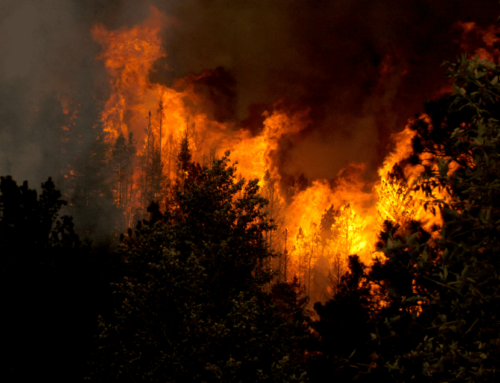
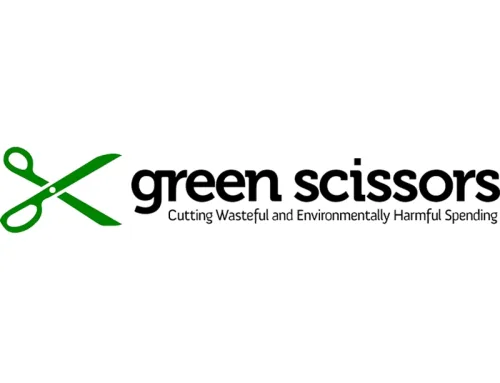

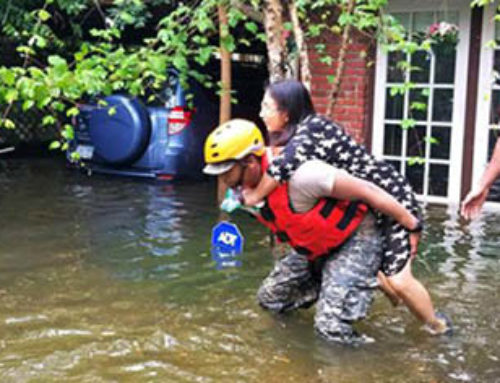
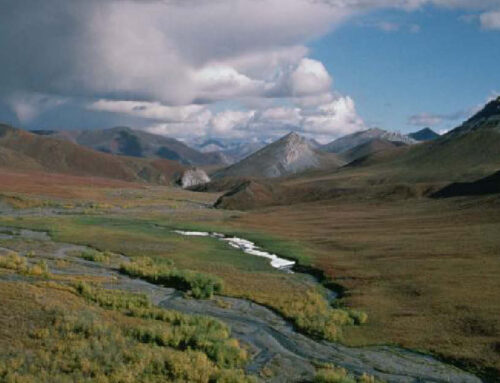


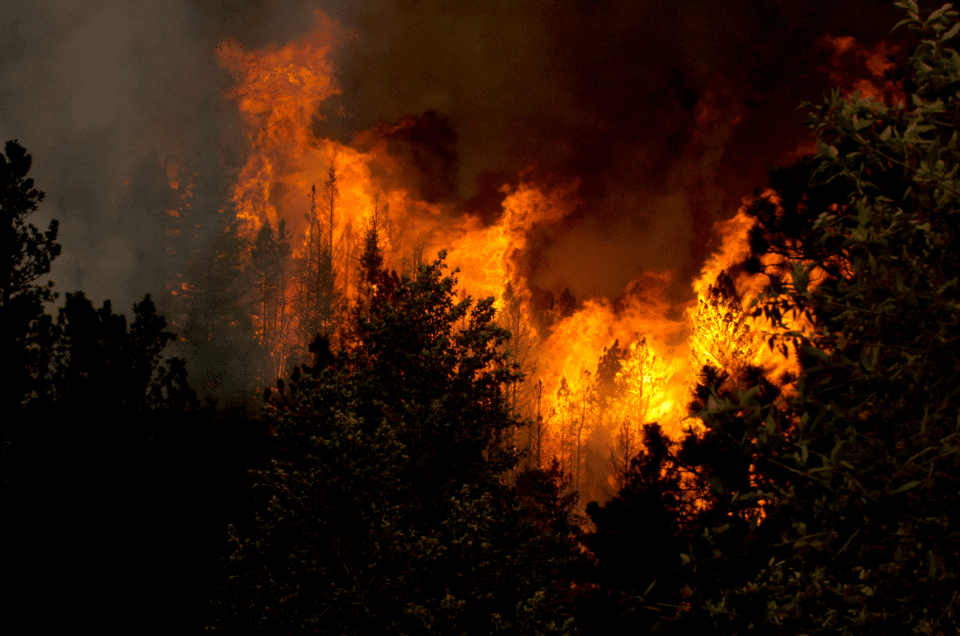
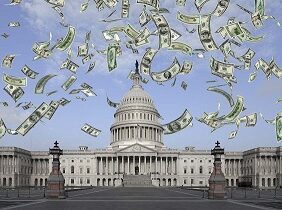
Get Social